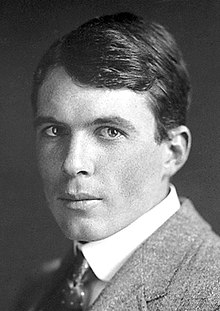William Lawrence Bragg
|
Sir William Bragg CH OBE MC FRS |
|
|---|---|

William L. Bragg in 1915
|
|
| Born | William Lawrence Bragg 31 March 1890 Adelaide, South Australia |
| Died | 1 July 1971 (aged 81) Waldringfield, Ipswich, Suffolk, England |
| Nationality | British |
| Fields | Physics |
| Institutions | |
| Education | St Peter's College, Adelaide |
| Alma mater | |
| Academic advisors | |
| Doctoral students | |
| Known for |
X-ray diffraction Bragg's law |
| Notable awards |
|
| Notes | |
|
He was the son of W.H. Bragg. Note that the PhD did not exist at Cambridge until 1919, and so J. J. Thomson and W.H. Bragg were his equivalent mentors.
|
|
Sir William Lawrence Bragg CH, OBE, MC, FRS (31 March 1890 – 1 July 1971) was an Australian-born British physicist and X-ray crystallographer, discoverer (1912) of Bragg's law of X-ray diffraction, which is basic for the determination of crystal structure. He was joint winner (with his father, William Henry Bragg) of the Nobel Prize in Physics in 1915: "For their services in the analysis of crystal structure by means of X-ray", an important step in the development of X-ray crystallography.
Bragg was knighted in 1941. As of 2016, he is the youngest ever Nobel laureate in physics, having received the award at the age of 25 years. (The youngest of all Nobel laureates is Malala Yousafzai, who won the Nobel Peace Prize in 2014 at the age of 17.) Bragg was the director of the Cavendish Laboratory, Cambridge, when the discovery of the structure of DNA was reported by James D. Watson and Francis Crick in February 1953.
Bragg was born in Adelaide, South Australia. He showed an early interest in science and mathematics. His father, William Henry Bragg, was Elder Professor of Mathematics and Physics at the University of Adelaide. Shortly after starting school, William Lawrence Bragg fell from his tricycle and broke his arm. His father, who had read about Röntgen's experiments in Europe and was performing his own experiments, used the newly discovered X-rays and his experimental equipment to examine the broken arm. This is the first recorded surgical use of X-rays in Australia.
...
Wikipedia
